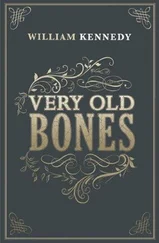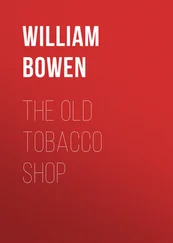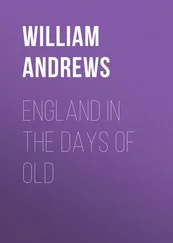William Axon - Echoes of old Lancashire
Здесь есть возможность читать онлайн «William Axon - Echoes of old Lancashire» — ознакомительный отрывок электронной книги совершенно бесплатно, а после прочтения отрывка купить полную версию. В некоторых случаях можно слушать аудио, скачать через торрент в формате fb2 и присутствует краткое содержание. Жанр: foreign_antique, foreign_prose, на английском языке. Описание произведения, (предисловие) а так же отзывы посетителей доступны на портале библиотеки ЛибКат.
- Название:Echoes of old Lancashire
- Автор:
- Жанр:
- Год:неизвестен
- ISBN:нет данных
- Рейтинг книги:3 / 5. Голосов: 1
-
Избранное:Добавить в избранное
- Отзывы:
-
Ваша оценка:
- 60
- 1
- 2
- 3
- 4
- 5
Echoes of old Lancashire: краткое содержание, описание и аннотация
Предлагаем к чтению аннотацию, описание, краткое содержание или предисловие (зависит от того, что написал сам автор книги «Echoes of old Lancashire»). Если вы не нашли необходимую информацию о книге — напишите в комментариях, мы постараемся отыскать её.
Echoes of old Lancashire — читать онлайн ознакомительный отрывок
Ниже представлен текст книги, разбитый по страницам. Система сохранения места последней прочитанной страницы, позволяет с удобством читать онлайн бесплатно книгу «Echoes of old Lancashire», без необходимости каждый раз заново искать на чём Вы остановились. Поставьте закладку, и сможете в любой момент перейти на страницу, на которой закончили чтение.
Интервал:
Закладка:
Kufic Coins found in Lancashire
In the great find of coins at Cuerdale in North Lancashire, besides a single Byzantine piece there were several Kufic coins, along with some of North Italy, about a thousand French and two thousand eight hundred Anglo-Saxon pieces. In these coins, and in those found over the whole of Northumbria are to be seen the evidences of the active commercial intercourse that even in the pre-historic ages prevailed between the Eastern world and the people of the North of Europe, and especially those dwelling on the shores of the Baltic. This has been abundantly proved by the numerous archæological discoveries made from time to time. 3 3 For further details on the commerce of the Arabs, and especially as to the extended currency of Kufic coins, J. J. A. Worsaae’s “Danes in England,” 1852; Ernest Babelon’s “Du Commerce des Arabes,” 1882; Le Bon’s “La Civilisation des Arabes,” 1884; may be consulted.
Whilst Scandinavia was still in the Stone and Bronze stages of the development of civilisation, merchants came to the Baltic for furs, tin, and the yellow amber so highly prized as an ornament by the oriental women. Indeed Oppert has shown that ten centuries before the Christian era the Assyrians had at least indirect communication with the Baltic shores, the only locality known to the ancient world where the yellow amber could be procured. The references to amber in Homer and Hesiod have not passed without dispute, but the discoveries of Greek coins in various parts leave little or no doubt as to the existence of commercial routes, which went from the Black Sea, by the Dnieper, the Bug and the Dniester, to gain the basin of the Niemen and of the Vistula, and thence spread to the Baltic. The amber commerce in the hands of the Milesians and the Greeks found various routes. The Roman women were as passionately partial to amber ornaments as their sisters of the East, and there is sufficient testimony as to the commercial intercourse of Rome with the barbarians of the North.
The Arabs, although in the Middle Ages they had the monopoly of the trade, were not its originators, but merely continued an intercourse that had existed from remote antiquity. The mediæval geographers had very little precise knowledge; but in the Mappa Mundi of the tenth century, in the British Museum, the parts of northern Europe indicated with the fewest misconceptions are the countries of the amber trade. The rapid conquest of western Asia by the Arabs was followed by those internal dissensions which led to the formation of independent kingdoms. The Samanides, who reigned in Persia and dominated the shores of the Caspian Sea, were the principal cultivators of the North trade. The Arabs, if they had little taste for maritime commerce, were admirably adapted to be the leaders of great caravans, by which the riches of the East were spread into far lands. From Egypt they went across the Sahara to Nigritia, from whence they brought gold, ivory, and slaves. Passing through Persia and Cashmere they worked in the direction of India. Crossing the immense steppes of Tartary, they entered China by the province of Shen-si. Their caravans to Europe passed by Armenia on the south, and by Bokhara and Khorassan on the east. There were great fairs at Samarcand, Teheran, Bagdad, and other places. The merchants directed their course to the Caspian, and halted at Derbend before ascending the Volga. The itinerary of these pilgrims of commerce can be reconstructed from the Kufic coins and accompanying ornaments that have been found at Kazan, Perm, Tula, Moscow, Smolensk, Novgorod, St. Petersburg, and other localities. The finds of Arabic moneys in the Russian Empire have occurred almost exclusively in the country watered by the Volga, which was the line of communication for the Arabs with the Slavs and Scandinavians of the Middle Ages. The shores of Germany, Lithuania, and Sweden were visited. The most northerly discoveries of Kufic coins have been by the river Angermann, which empties itself in the Gulf of Bothnia. The islands of Gothland, Oland, and Bornholm appear to have been the centre of this commercial activity. Lithuania, Denmark, and Poland, especially the latter, have also yielded to the antiquarian investigator many evidences of intercourse with the Arabs. On the coasts of Pomerania and along the course of the Oder Kufic coins have been found, the southern limit being apparently in Silesia.
Worsaae in speaking of some silver ornaments with a triangular pattern of three or four points, also found at Cuerdale, says “that the discovery of so many coins of this class in Russia, from the Caspian and the Black Sea up to the shores of the Baltic, sufficiently proves that from the eighth until the eleventh century there existed a very lively intercourse by trade between the East and the northern parts of Europe.” 4 4 “Remarks on the Antiquities found at Cuerdale,” p. 2.
The Vikings, who are usually regarded as simply pirates, had their share in this commerce. From the East came rich fabrics, ornaments and vases, and their bearers carried back in return ermines, furs, slaves, and, above all, amber, which whilst valued as an ornament was also credited with wonderful powers of preserving the health of the wearer. This commerce did not have so much social or political result as might have been expected from four centuries of activity. The grave events alike in Asia and Europe which followed the fall of the Samanides interrupted its peaceful course, and before it could fall again into the old tracks there came the tempestuous interlude of the first Crusade.
From this it will be seen that the occurrence of Kufic coins in the north of England is one of the evidences of the activity of the Danes, and of their commercial intercourse with the nations of the East.
Newspapers in 1738-39
It may not be uninteresting to describe some of the oldest surviving fragments of Lancashire newspapers which were formerly in the collection of Sir Thomas Baker, and are now, with many others, in the Manchester Free Library. After a fragment of one leaf we have “ The Lancashire Journal : with the history of the Holy Bible.” Monday, October 16th, 1738. Num. xvi. The printer and publishers are thus set forth: – “Manchester: printed and sold by John Berry at the Dial near the Cross, and Sold by Mr. Ozly at the White-Lyon in Warrington, Mr. Sears at the White-Lyon in Liverpool, Mr. Gough at the Spread Eagle in Chester, Mr. Maddock, Bookseller in Namptwich, Mr. Kirkpatrick in Middlewich, Mr. Davis, Bookseller in Preston, Mr. Sidebottom at the Sun and Griffin in Stockport, Mrs. Lord in Rochdale, Mr. Hodgson, Bookseller in Halifax, Mr. Rockett, Bookseller in Bradford, Mr. Bradley, Peruke-maker in Wakefield; at which places also are taken in all sorts of advertisements to be inserted in this Paper at Two Shillings and Sixpence Each.” There is, after the fashion of the time, very little local news, the object of these early journals being to tell the people what was going on at a distance. We hear (October 16th) of the offence given by the “French strollers” in attempting to perform a play in their own language at the Haymarket. The “patriots” were so riotous in their resentment that “the encouragers of these French Vagabonds, durst not in any Coffee-House or Place where the most Polite resort, either Publickly avow their Sentiments, or declare their Resentment.” From Bristol there is news of rioting by the colliers of Kingswood, as a practical objection to a reduction of wages, from sixteen to twelve pence per day.
Конец ознакомительного фрагмента.
Текст предоставлен ООО «ЛитРес».
Прочитайте эту книгу целиком, купив полную легальную версию на ЛитРес.
Читать дальшеИнтервал:
Закладка:
Похожие книги на «Echoes of old Lancashire»
Представляем Вашему вниманию похожие книги на «Echoes of old Lancashire» списком для выбора. Мы отобрали схожую по названию и смыслу литературу в надежде предоставить читателям больше вариантов отыскать новые, интересные, ещё непрочитанные произведения.
Обсуждение, отзывы о книге «Echoes of old Lancashire» и просто собственные мнения читателей. Оставьте ваши комментарии, напишите, что Вы думаете о произведении, его смысле или главных героях. Укажите что конкретно понравилось, а что нет, и почему Вы так считаете.












